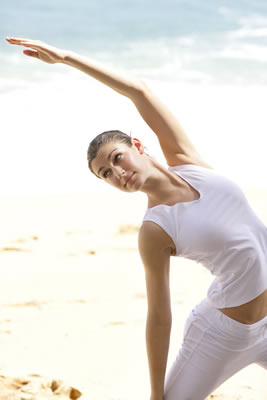
The practice of yoga has become increasingly popular over the past decades but it has received little attention in the medical literature as a possible treatment for depression and anxiety. Hatha yoga, the most common type of yoga practiced in the United States combines three elements: poses or asanas, controlled breathing practiced along with the asanas and a brief period of meditation.
Available reviews of a wide range of yoga practices suggest they can reduce the impact of exaggerated stress responses and may be helpful for both anxiety and depression. In this respect, yoga functions like other self-soothing techniques, such as meditation, relaxation, exercise, or even socializing with friends.
Three randomized controlled studies show that practicing yoga has a positive effect on calming the stress response, improving moods and mitigating the effects of PTSD on returning soldiers.
Calming the stress response
Practicing yoga can reduce perceived stress and anxiety, modulating stress response systems and decreasing physiological arousal such as lowering blood pressure, reducing the heart rate and slowing respiration. There is also evidence that yoga practice helps increase heart rate variability, an indicator of the body's ability to respond to stress more flexibly.
Improved mood
A 2005 German study showed that women who participated in a yoga group reported improvements in perceived stress, depression, anxiety, fatigue and well-being. The 24 women had described themselves as "emotionally distressed" before taking two 90-minute yoga classes a week for three months. Women in a control group kept to their normal activities and did not begin an exercise or stress-reduction program during the study period.
All participants had experienced emotional distress for at least half of the previous 90 days but none had been formally diagnosed with depression. Three scales were used in determining their emotional discomfort of stress, anxiety and depression: the Cohen Perceived Stress Scale, the Spielberger State-Trait Anxiety Inventory, and the Profile of Mood States and the Center for Epidemiological Studies Depression Scale, or CES-D, respectively.
At the end of the three months, the women in the yoga group reported
At the end of three months, women in the yoga group reported an improvement in depression scores by 50%, anxiety scores by 30%, and overall well-being scores by 65%. Initial complaints of headaches, back pain, and poor sleep quality also resolved much more often in the yoga group than in the control group.
Promising help for PTSD
According to one estimate, about 20 percent of war veterans who served in Iraq or Afghanistan suffer from post-traumatic stress disorder (PTSD). Since evidence suggests that yoga can tone down maladaptive nervous system arousal, experts treating this population suggest that yoga can be a useful addition to the treatment program.
Dr. Kristie Gore, a psychologist at Walter Reed, says the military hopes that yoga-based treatments will be more acceptable to the soldiers and less stigmatizing than traditional psychotherapy. The center now uses yoga and yogic relaxation in post-deployment PTSD awareness courses, and plans to conduct a controlled trial of their effectiveness in the future.
Conclusion
For many patients dealing with depression, anxiety, or stress, yoga may be a very appealing way to better manage symptoms. Indeed, the scientific study of yoga demonstrates that mental and physical health are not just closely allied, but are essentially equivalent. The evidence is growing that yoga practice is a relatively low-risk, high-yield approach to improving overall health.
April 2009 Mental Health Letter published by the Harvard Health Publications of Harvard Medical School